Pricier repairs for aluminum F-150 than steel model in fender-benders
July 30, 2015
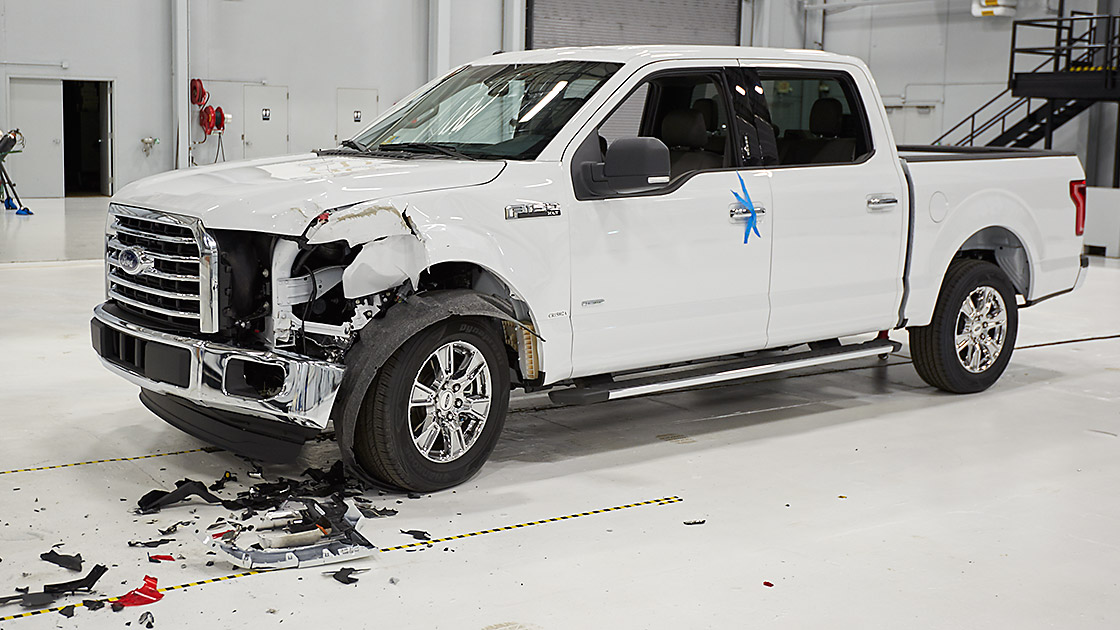
The Ford F-150 crew cab scores high marks for crashworthiness, but when it comes to damage in low-speed crashes, the aluminum-body pickup is pricier to repair than its steel-bodied predecessor, the Institute found.
A report released last year by HLDI examined the costs to repair aluminum vehicles after low-speed impacts. Analysts found a 20 percent increase in the average collision claim severities in vehicles with high aluminum content compared with their steel counterparts. Collision coverage insures against vehicle damage to an at-fault driver's vehicle in a crash with another vehicle or object.
To assess whether higher repair costs also would be the case for the F-150, IIHS engineers ran low-speed crash tests with the new F-150 crew cab and the 2014 steel-body F-150 to compare repair costs.
In one test, the front left corner of the steel-body F-150 struck the right rear corner of the aluminum truck at 10 mph with a 15 percent overlap. In the second test at the same speed and overlap, the front left corner of the aluminum pickup struck the rear corner of the steel model.
In both scenarios, the aluminum F-150 had more extensive damage than the steel model. IIHS researchers had both trucks repaired at a Ford dealership certified for aluminum repairs. The costs to fix front test damage were $4,147 for the aluminum model and $3,759 for the steel model. In the rear test, the aluminum F-150 had $4,738 in damage, while the repair bill for the steel-body F-150 came in at $3,275.
Total repair costs for front and rear damage combined were 26 percent higher for the aluminum F-150, in line with HLDI's finding on collision claim severities for other vehicles with high-aluminum content.
"From a simple bolt-on parts replacement to a more-involved removal and installation of entire body panels, fixing the aluminum F-150 is more expensive than repairing a steel-body F-150," says David Zuby, the Institute's chief research officer.
Test damage repair costs: steel vs. aluminum F-150
10 mph impact with 15% overlap
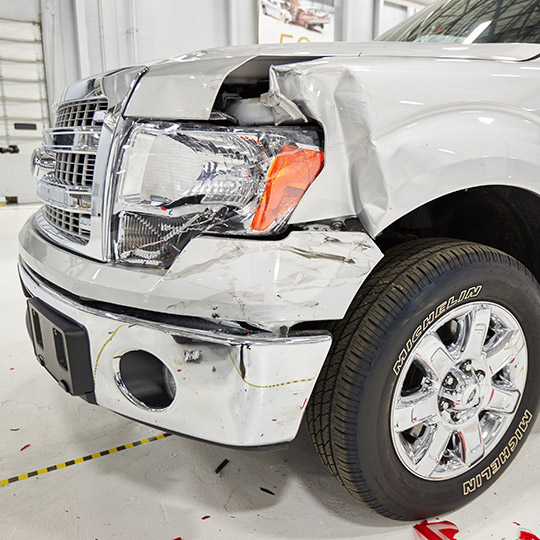
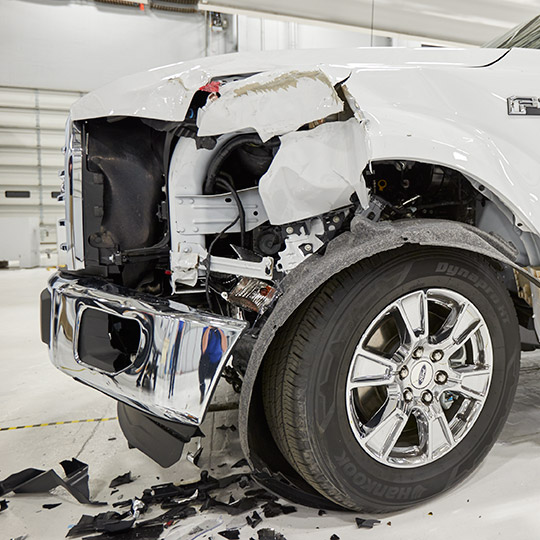
The aluminum F-150 took longer to repair than the steel pickup, pushing up the bill for the front test. Mechanics had to assemble wiring and other components before a new fender could go on.
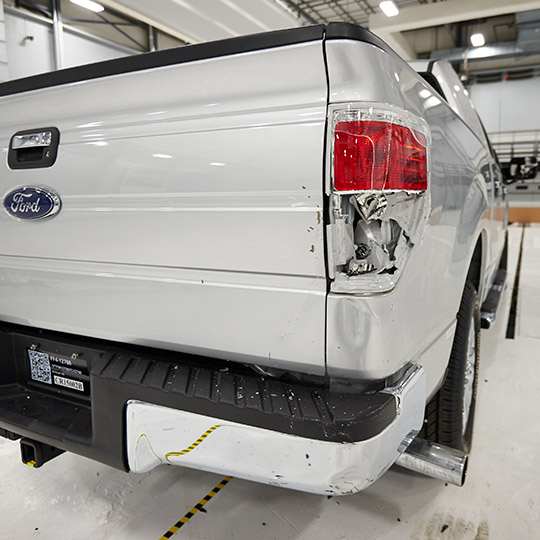
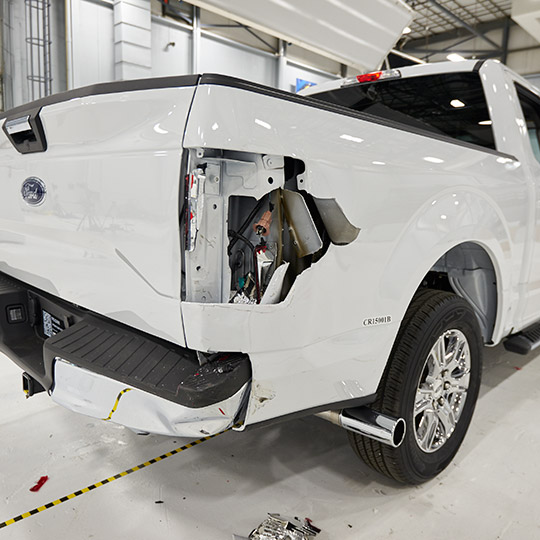
Both pickups had damage to their beds, tailgates and exhaust pipes in the rear test. The aluminum model needed a new bed; the steel bed could be repaired.
Extra time to repair the aluminum body accounted for the higher price to fix frontal damage, while higher parts costs pushed up the repair bill for the rear damage.
It took more time to repair the aluminum model's front damage, mainly because mechanics had to assemble components such as wiring harnesses and splash guards under the ruined front fender before a new one could be attached. Labor costs were 22 percent higher for the 2015 model.
After being struck in the rear, one side of the aluminum F-150's truck bed needed replacing. In contrast, the steel model's bed could be repaired. Both trucks needed new tail lamps, bumpers and exhaust pipes. The aluminum F-150's total parts costs to fix rear damage were 42 percent higher than the steel model's total.
Besides repair costs, there are other considerations with aluminum-body vehicles. To avoid steel/aluminum cross-contamination that leads to corrosion, these vehicles need to be repaired in a separate area, with dedicated tools and gear used by mechanics who are trained to do the intricate welding, riveting and bonding aluminum requires.
Industry watchers expect automakers to use more aluminum in vehicles. By 2025, more than 75 percent of all new pickups produced in North America are expected to be aluminum-bodied, along with more than 20 percent of SUVs and full-size cars, according to a Ducker Worldwide survey of original equipment manufacturers and suppliers published in June 2014.